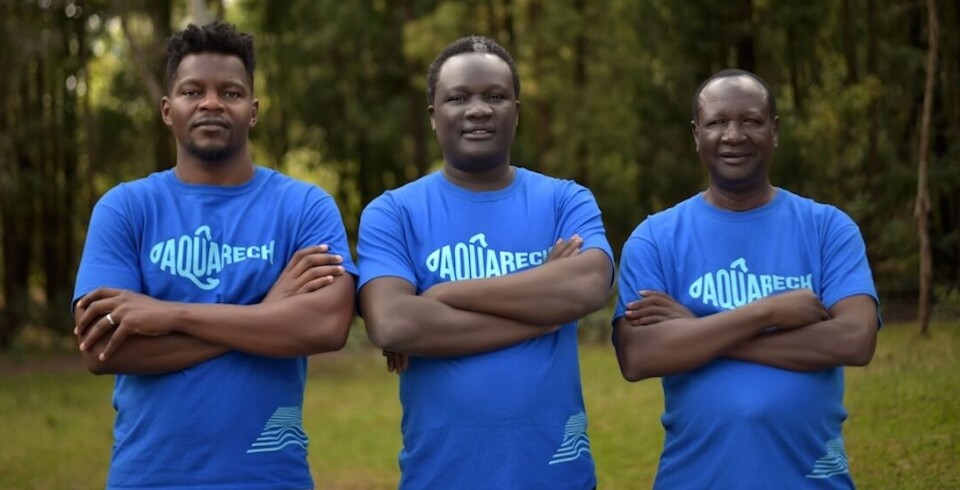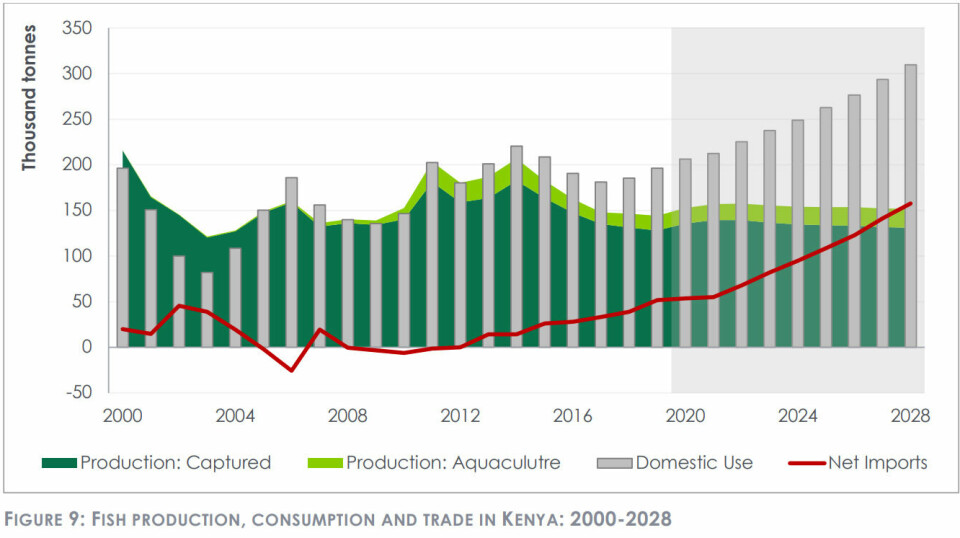
Kenyan fish farming mobile app operator nets £1.36m for expansion
A company providing an internet platform that connects fish farmers, feed manufacturers, and fish traders in Kenya has raised US $1.7 million (£1.36m) with an equity investment led by Netherlands-based sustainable aquaculture investor Aqua-Spark.
Aquarech is a mobile app platform that can be used by small and medium-sized fish farming businesses to buy quality fish feed, sell harvest for consistent incomes, and grow farm operations with the help of Aquarech training.
Feed manufacturers can sell and distribute products to the company’s network of fish farmers as a verified Aquarech seller, and traders can buy fresh, locally produced tilapia and catfish through the app.
1,000-plus clients
According to information on its website, more than 1,000 of Kenya’s 10,000-plus smallholder fish farmers use Aquarech and 100 tonnes of feed are traded monthly. Half of its on-boarded farmers have increased income, 30% have increased productivity, and 35% have reduced the length of production cycles.
The new funding, which includes additional investment from Acumen, Katapult and Mercy Corps Ventures, will be used by Aquareach to acquire more feed, and set up infrastructure to support more vertical integration of its technology.
“The funding and partnership provided by our investors will promote the growth of our mobile-enabled platform, which is unlocking barriers faced by smallholder fish farmers and bringing the various value chain actors together while remaining farmer-centric,” said chief executive and co-founder Dave Okech.
A unique combination
Christiaan Lensvelt, head of new deals at Aqua-Spark, said: “Aquarech is committed to improving local livelihoods by supporting smallholder to medium farmers to become commercially and environmentally sustainable.
“We look forward to supporting Dave and his team in achieving great things for the industry as one of the few aquaculture start-ups in Africa with a unique combination of field experience and digital tools.”
Demand for fish for the table in Kenya is expected to increase from 200,000 tonnes to 300,000 tonnes in the next five years, according to a 2021 report by experts from Kenya and the US. The report points out that per capita consumption of fish in Kenya is 4 kg/year, which is very low compared to the African and global averages, estimated at 10 and 20 kg/year, respectively.
Supply shortfall
“The main factors contributing to Kenya’s low per capita consumption is the country’s inability to satisfy demand, coupled with high prices for high quality export products,” says the report.
It adds: “Projected growth in both income levels and the size of the population points to ample additional demand over the coming decade. This rapid growth in fish consumption is expected to lead to substantial market opportunities, but in order to meet this demand, domestic production will need to expand from around 15,000 tonnes to 150,000 tonnes in ten years’ time. In the absence of such expansion, half of the fish consumed in Kenya by 2028 could be imported, at a cost of more than US $70 million per annum.”
























































